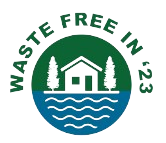Introduction
Fertilizers are essential for modern agriculture, but synthetic fertilizers require high energy inputs and can harm the environment. Human waste, which contains valuable nutrients like nitrogen (N) and phosphorus (P), offers an alternative. This study by Krounbi et al. (2018) investigates how different treatment methods—composting, torrefaction, and pyrolysis—affect the availability of these nutrients in soils with varying textures and pH levels.
Methods
The researchers examined three waste treatment techniques:
Composting (60°C) – A natural decomposition process using heat and microbes.
Torrefaction (200°C) – A mild heating process that alters the chemical structure of the waste.
Pyrolysis (300°C, 500°C) – A high-temperature process that converts waste into biochar.
Each method was tested to determine how it affected nitrogen and phosphorus availability in soils with different textures (sandy, loamy, and clay) and pH levels (acidic, neutral, and alkaline). They also investigated how adding urine, which is rich in nitrogen, impacted the overall nutrient content.
Key Findings
Composting improved nitrogen availability by 15–25%. This method preserved nitrogen in a form that plants can easily absorb.
Torrefaction increased nitrogen availability by 40–57%. The moderate heating process retained more nitrogen compared to composting.
Pyrolysis at 500°C provided the highest phosphorus availability, increasing it by 41–106% compared to composting and 84–165% compared to torrefaction. However, it reduced nitrogen levels.
Combining urine with pyrolyzed waste significantly enhanced nitrogen availability, adding up to 486 kg of nitrogen per hectare while maintaining high phosphorus levels.
Soil acidification was observed when urine was added, but it remained within acceptable limits for plant growth.
Economic and Environmental Benefits
Economic Benefits
Reduced Dependency on Synthetic Fertilizers: Using treated human waste as a fertilizer can lower costs for farmers, especially in regions where synthetic fertilizers are expensive.
Increased Crop Yields: Higher nitrogen and phosphorus availability means better plant growth, leading to more food production.
Efficient Waste Management: Turning human waste into fertilizer provides a cost-effective solution for sanitation and reduces the burden on wastewater treatment plants.
Environmental Benefits
Recycling Nutrients: This process keeps valuable nutrients in the soil instead of letting them pollute water bodies through sewage runoff.
Lower Greenhouse Gas Emissions: Composting and pyrolysis reduce methane emissions compared to untreated waste decomposition.
Soil Health Improvement: Biochar from pyrolysis improves soil structure, retains moisture, and enhances microbial activity.
Conclusion
This study highlights the potential of human waste as a sustainable fertilizer. While composting is good for nitrogen retention, pyrolysis at 500°C significantly boosts phosphorus availability. Adding urine further enhances nitrogen levels, making this a powerful combination for agricultural use.
For widespread adoption, more research is needed on long-term soil impacts, and policies should support the safe and efficient use of human waste in farming. By recycling human waste into valuable nutrients, we can create a sustainable, cost-effective, and environmentally friendly agricultural system.
Reference: Krounbi et al., 2018. Nitrogen and Phosphorus Availability of Biologically and Thermochemically Decomposed Human Wastes and Urine in Soils With Different Texture and pH. Full Paper
Got questions?
